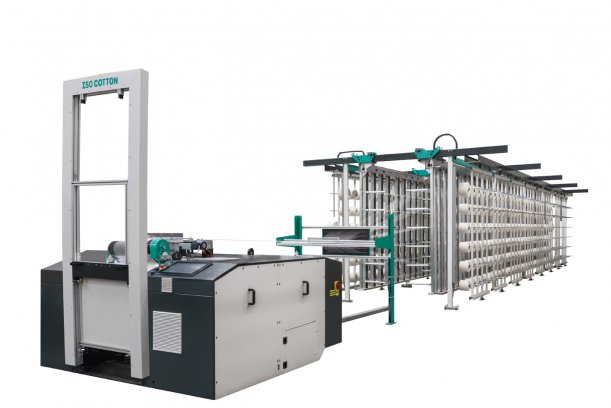
Montex Coat ticks right boxes for coating success in 2021
Ensuring perfect tension in warp preparation.

12th April 2022
Innovation in Textiles
|
Obertshausen, Germany
Karl Mayer’s yarn tensioners reliably guarantee a constant yarn tension over the entire length and width of the warp during yarn drawing-off during the warp preparation process – from the first metre to the last. They are extremely wear-resistant, even against the high loads exerted by fast running yarns
In order to help customers regulate tension when working with cotton yarns, particularly for denim and applications that require coarse gauges, the company recommends the Disctens.
This high-precision, electromagnetic, disc-type yarn tensioner has proven its worth in many applications, especially when used in tandem with the company’s ball warper. The new Iso Cotton direct warping machine also provides optimum benefits when used with the Disctens, which this year has been upgraded to further boost its performance.
The Disctens gauge range is 30% wider than that of comparable models from 3 cN to 95 cN. It can work cotton yarns with counts of 4 to 100 Ne at the necessary tensions without any problems. To ensure maximum flexibility, it uses a pair of discs and the force of electromagnetic attraction. One of the two disc elements – which are positioned opposite one another – is made of brass, the other of steel. When a magnetic field is generated, the gap between the discs becomes smaller and the yarn tension increases. During this process, the magnetic force – and thus the yarn tension – is regulated digitally with an extremely high level of precision. This is done for all package positions and each thread of the creel is controlled by a single Disctens.
Self-cleaning
To ensure efficient removal of soiling, the discs are driven by a motor in the let-off direction of the yarn and arranged vertically rather than horizontally, as with most other yarn tensioners. This means that any dirt can simply fall to the ground and does not need to be blown off the discs. The motor, however, only runs when it’s needed. An optical sensor is used to check that the threads are present and moving correctly, and triggers an automatic stop if not. This double-check is necessary because the yarns in the unused package position are often knotted when the number of threads is altered frequently – they are still in play but not being moved.
For materials that are particularly prone to linting, the Disctens can be fitted with an optional, built-in blower nozzle.
Easy input
The Disctens can be used on all Karl Mayer GH-series creel types and is fully integrated into the PLC architectures and operator interfaces of its warp preparation systems. All the machine operator needs to do to set up the Disctens before operation is to enter the yarn count via the operator interface. No additional displays or data input are required. The system automatically derives and calculates all the other figures it needs, including the yarn tension, based on this information.
In addition to allowing data input, the display also outputs all the information required. One of the factors included in this output is the “Learned/Not learned” status, which indicates when the target number of threads entered by the user does not match the actual number present. If a thread is missing, the display indicates where it should be using information received from the yarn tensioner.
The operator interface also provides notifications of yarn breaks and if a thread tears, brings operation to a stop extremely quickly via proven opto-electronic stop-motion-sensors.
Differences in tension can be adjusted separately using the calibration option – on older systems, each individual position had to be adjusted seperately using a tool.

Business intelligence for the fibre, textiles and apparel industries: technologies, innovations, markets, investments, trade policy, sourcing, strategy...
Find out more